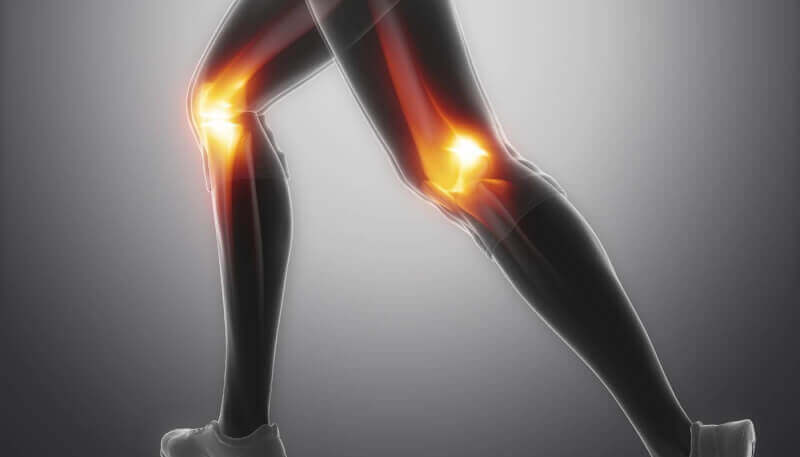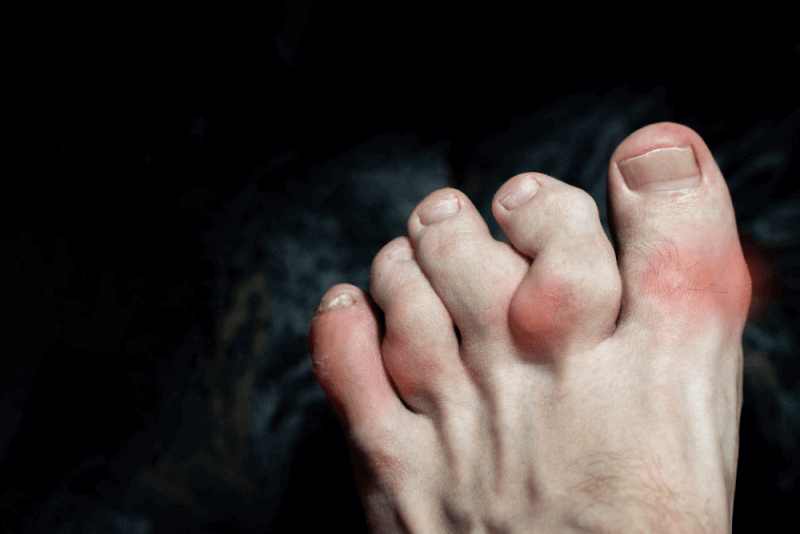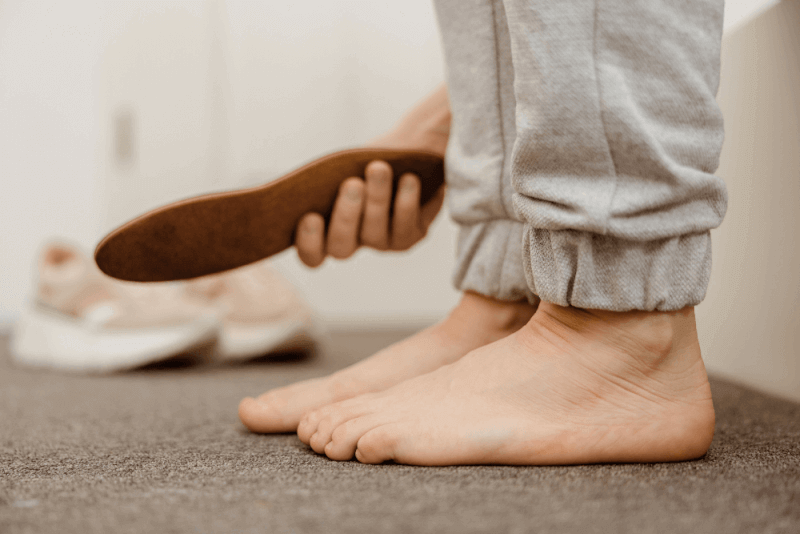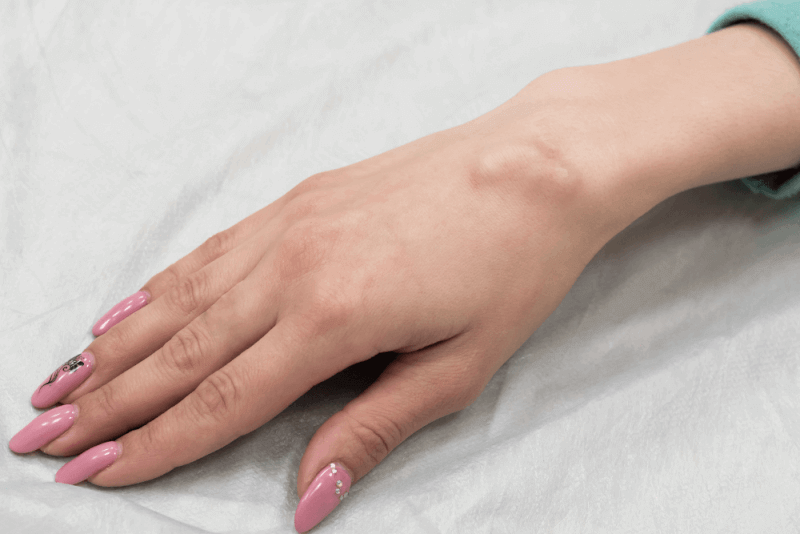30-Second Summary
- The menisci can tear as a result of traumas such as sports activities, falls, and traffic accidents.
- Symptoms include pain, swelling, locking, and catching sensations.
- Diagnosis is made through physical examination, radiography, and magnetic resonance imaging (MRI).
- Treatment varies depending on the size and location of the tear. If the meniscus tear is small, conservative treatment may be applied. If the tear is large, surgical treatment may be necessary.
- The menisci serve to protect the knee joint from impacts, provide lubrication, and maintain the stability of the knee joint.
Commonly known among football players, a meniscus tear is often associated with ending their sports careers. Today, anterior cruciate ligament injuries are a nightmare not only for athletes but for anyone who puts strain on their knees. Fortunately, modern medicine has made meniscus tears easily treatable.
What is a Meniscus?
Although the meniscus is known as a disease by the public, it is actually a structure located in the knee joint. The meniscus, which protects the cartilage, also facilitates the movement of the knee, one of the most used joints in the body. It acts as a hinge between the femur and tibia, and is present in pairs in both knees.
The meniscus, a C- or O-shaped structure in the knee joint, is located between the femur and leg. There are two menisci in each knee, referred to as the medial and lateral meniscus. The meniscus's role is to ensure knee stability and prevent cartilage injury by acting as a shock absorber. This makes it an essential part of the knee's anatomical structure.
The O-shaped meniscus is the lateral meniscus, and the C-shaped meniscus is the medial meniscus. The meniscus facilitates more contact between the femur and tibia bones and helps distribute body weight more evenly.
Another function of the meniscus in the knee joint is to absorb sudden and severe impacts, allowing the joint fluid to spread over the cartilage. This function also leads to meniscus injuries.
What are the Functions of the Meniscus?
The meniscus is extremely important for the knee joint and serves four different functions.
First Function
The primary function of the meniscus is to absorb the load applied to the knee joints.
Second Function
The menisci increase the lubrication of the structures in the knee joint while also protecting the surfaces of these structures.
Third Function
The meniscus contributes to making the knee joint more robust. This makes the knee joint more durable and flexible. It helps maintain joint stability by being positioned between the bones, ligaments, and capsules in the knee joint.
Fourth Function
The meniscus improves the alignment between the femur and tibia, enhancing the harmony between the structures in the knee joint. Additionally, the meniscus structures in the knee joint help nourish the cartilage and absorb joint fluid.
Stages of Meniscus Tears
The classification defined by Raunest is generally used in diagnosing meniscus tears. Classifications during MRI scans are as follows:
Stage 1
In the first stage of meniscus tears, small punctate degenerations are observed. Conservative treatments are usually sufficient for patients at this stage.
Stage 2
In the second stage of meniscus tears, linear degenerations are observed in the meniscus structure. In the first and second stages, physical examination findings are usually sufficient. Conservative treatments, including PRP and stem cell therapies, are sufficient for second-stage tears as well.
Stage 3
In the third stage of meniscus tears, the tear extends to the joint surface. Depending on the examination findings, surgical or non-surgical treatment options are considered for patients at this stage.
Stage 4
In the fourth stage of meniscus tears, structural tears and degeneration are present. Therefore, surgical methods are used in the treatment of the fourth stage.
How Do Meniscus Injuries Occur?
Meniscus injuries, which athletes frequently encounter in their professional lives, also occur in daily life. They are particularly common in those who stand for long periods, carry heavy loads, the elderly, and women who do a lot of housework. Meniscus injuries often occur when body weight is shifted to one side, but they can also result from lifting heavy loads, squatting, or kneeling. These injuries can be categorized under a few main headings.
Direct Injuries
These are meniscus injuries caused by direct impacts to the knee joint. Kicks to the knee, traffic accidents, or falls on the knee are the most common causes of these injuries.
Indirect Injuries
These injuries occur when the body rotates on the knee while the knee joint is stationary. These injuries are particularly common in football matches or skiing, where they result from losing balance or the foot being caught, causing the body to rotate uncontrollably on the knee.
Degenerative Injuries
Degenerative injuries occur in older age due to the deformation that occurs in the body with aging. Degenerative injuries can occur even with minor impacts to the body.
Causes of Meniscus Tears
The menisci located in the knee joint are made of cartilage. The most common cause of meniscus tears, especially in younger patients, is trauma. In older individuals, the cause of meniscus tears is usually the deterioration of the meniscus quality, which is often due to traumatic events.
Symptoms of a Meniscus Tear
The meniscus can be damaged for various reasons. These conditions, referred to as meniscus tears or meniscus injuries, have similar symptoms. However, the symptoms in patients with meniscus tears can be more severe than in those with meniscus injuries. The most common symptoms of a meniscus tear are as follows:
- Pain along the knee joint line
- Locking of the knee
- Loss of function
- A feeling of catching
- Numbness in the leg
- A feeling of giving way in the leg and progressively worsening pain
- Increased pain when going up and down stairs
- A popping sound or sensation during the formation of the lesion
- Swelling
- Difficulty in straightening the knee
Diagnosis of Meniscus Injury & Tear
Patients who present with the symptoms mentioned above first undergo a physical examination. Taking the patient's history during the physical examination is also important. The tests applied during the physical examination include the McMurray test and the Apley test. Additionally, during the physical examination, the orthopedic specialist examines whether there is any deformity between the patient's knee and ankle joint, which can provide insight into the condition of the disease. If a deformity is present, it can affect the treatment plan.
Valgus stress testing and varus stress testing, which provide more detailed information during the physical examination, can also be applied to understand the extent of the meniscus tears. An MRI scan may be requested from the patient to determine if there are any other injuries in addition to the meniscus tear. A meniscus tear can occur alone or in conjunction with injuries to the bones and muscle tissues connected to it. The degree and type of the meniscus tear and the patient's activity level are crucial in shaping the treatment plan.
McMurray Test
This test is used to determine if there is any issue in the medial or lateral meniscus. In this test, the patient is asked to lie on their back and bend their knee. After the knee joint is flexed at a 90-degree angle, the patient is asked to extend the knee again. During these movements, the doctor's one hand is placed on the knee joint, while the other is positioned at the patient's ankle. With the hands in this position, it is easier to move the leg and identify potential issues. After checking for movement limitations by flexing the knee, the knee is rotated outward without changing the position of the hands. Finally, the patient's knee is suddenly extended. If a sound is heard from the knee during this process, the McMurray test is considered positive. A positive test result suggests a meniscus tear.
Apley Compression Test
The Apley Compression test is another test used to determine if there is any issue in the medial or lateral meniscus. For this test, the patient is asked to lie face down. The doctor then places one hand on the patient's heel and the other on the toes. The test begins by pushing the knee down. The knee is then rotated inward and outward to identify which area the issue is located in. If the patient feels pain when the knee is rotated outward, the problem is identified in the medial meniscus. If pain occurs during inward rotation, the problem is identified in the lateral meniscus.
Valgus Stress Test
To properly plan meniscus treatment, it is necessary to examine the collateral ligaments. The valgus stress test is applied for this purpose. During this test, the doctor's one hand is placed at the ankle, while the other is positioned on the outside of the patient's knee. The knee is then flexed to 30 degrees, and the patient is asked to extend the knee. If there is an opening on the inner side of the knee during this process, the Valgus Stress Test is considered positive.
Varus Stress Test
The Varus Stress Test, which is the opposite of the Valgus Stress Test, is used to detect tears in the lateral collateral ligaments. In this test, the doctor places one hand on the outer part of the ankle and the other on the inner side of the knee. The knee is flexed, and it is checked whether there is any loosening in the lateral collateral ligaments.
Imaging Methods
In addition to the physical examination, imaging methods are also used to accurately determine the treatment of patients with meniscus issues. For this purpose, direct radiography, arthrography, magnetic resonance imaging (MRI), and computed tomography (CT) are used.
Classification of Meniscus Tears
Meniscus tears are classified based on the cause of the disease. The type and vascularization location of the tear also play a role in classification.
Classification by Cause of Disease
Acute tears that occur as a result of sudden trauma, despite the absence of degeneration in the meniscus, fall into this class. Degenerative tears that occur due to normal load-bearing on the knee can also be seen.
Classification by Shape
This classification is based on the shape of the tear in the meniscus tissue. Vertical tears are referred to as longitudinal, while horizontal tears are called horizontal. Additionally, radial, flap, and complex tears are also included in this classification.
Classification by Vascularization Characteristics
Meniscus tears are divided into three categories based on vascularization. In the red-red zone, the meniscus tears have vascularization on both sides. Generally, these tears do not face any issues during healing. In the red-white zone, vascularization is only seen on one side of the meniscus tear, and the healing rate is lower for these tears. Finally, in the white-white zone, no vascularization is seen on either side of the meniscus tear, and the chances of healing are very low.
Meniscus Treatment
The degree and location of meniscus injuries are important in planning treatment. The initial first aid in acute cases involves applying ice to the affected area and elevating the knee above the body. If chronic pain and stiffness occur, prompt intervention is crucial for the patient's quality of life. Therefore, treatment should begin as soon as symptoms appear.
If the symptoms are ignored, it can significantly affect patients' daily lives, particularly in sports activities. Additionally, untreated meniscus tears can lead to wear in the bones and joints, causing a condition known as gonarthrosis, commonly referred to as osteoarthritis.
Arthroscopy (Minimally Invasive Method)
Today, arthroscopy is the most commonly used method for treating meniscus tears. The full name of the procedure is arthroscopic meniscectomy. In this method, a guide device equipped with a camera is used to examine the inside of the joint without making large incisions in the patient. The damaged meniscus tissue is either removed or repaired using the same medical device. After arthroscopic surgery, patients are usually discharged immediately. However, it may take 3-4 weeks for patients to return to their daily routines. However, not all meniscus tears require surgery. In young patients, non-surgical methods can often achieve a high recovery rate.
In some patients, significant bleeding may occur due to a meniscus tear. Since this condition requires intervention, surgery is preferred. In some patients without bleeding, the meniscus may need to be cleaned due to the condition of the meniscus tissue. In some cases, part of the meniscus tissue may be removed, while in others, the entire meniscus tissue may need to be removed.
Exercise and Medication Therapy
If patients have a low-grade meniscus tear, the meniscus can return to its original state with medication and regular exercise. In addition to the doctor-prescribed exercise and medication therapy, patients also need to rest for successful treatment. Failure to adhere to the prescribed physical therapy plan may result in the progression of the tear. Physical therapy for low-grade meniscus tears is recommended to continue for 1.5 months. The purpose of physical therapy for meniscus tears is to maintain knee mobility and restore the knee to its former state.
In the treatment of meniscus tears, medication and physical therapy are primarily applied. This involves applying ice to the area where the tear is located and using nonsteroidal medications to reduce pain and swelling. It is also necessary to protect the knee during treatment. These measures, including elastic bandages and rest, are taken to prevent the tear from recurring. If the patient has other issues along with the meniscus tear, steroid injection therapy may also be used.
Natural Treatment Methods
The meniscus is extremely important for the knee joint. To support this structure, vitamins and minerals can be used. Drinking homemade vinegar helps in the healing of the meniscus. Additionally, ginger, rosehip, lemon, and salt can be added to the vinegar.
What Should People with Meniscus Tears Be Aware Of?
Meniscus tears generally heal within 6 weeks. During this period, patients are treated with pain relievers if there is no knee locking. However, during this time, patients should avoid twisting and squatting movements.
Avoiding bending the knee will reduce the symptoms caused by the meniscus tear. Additionally, it is important to regularly perform the recommended exercises and therapies to prevent muscle atrophy in the leg. By doing the prescribed exercises and therapies, secondary effects caused by the meniscus, such as knee pain or a locking sensation, can be prevented.
Meniscus Brace
A meniscus brace is one of the medical devices used after surgeries for repairing meniscus tears. However, the use of a meniscus brace is not recommended after surgeries where the entire meniscus is removed due to a medical meniscus tear. By using a meniscus brace after surgery, the load on the knee is distributed more evenly, reducing the load. Reducing the load helps the knee heal more quickly.
What Does Meniscus Pain Feel Like?
Pain associated with a meniscus tear can be felt in different areas depending on the location of the tear. In addition to pain felt on the inner or outer side of the knee, patients may also experience a catching sensation. The pain caused by a meniscus tear tends to intensify over time.















L** O** | 21 Feb 2025